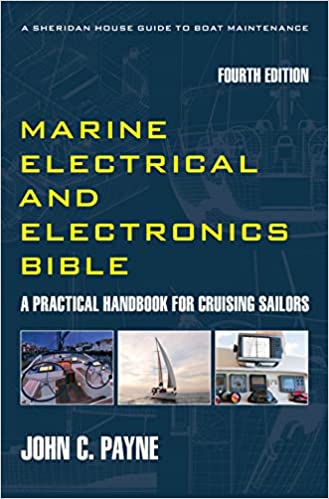Lighting for boat
Lighting for boat involves many aspects and much planning to consider. Selecting the best lighting for boat and installing it correctly is a constant cause of problems for many boat owners. Many choose the wrong light types, buying entirely on the basis of price, but seemingly ignoring the factors of long term reliability or illumination effectiveness. Many don't fully consider how they should be installed to minimize interference with electronics equipment or to limit large electrical power consumption. Choosing between fluorescent lighting, halogen lighting, LED lighting and low energy-lighting is always a difficult choice. Technology has come to the rescue with the LED light which has pervaded almost every area of lighting ashore and afloat. Boat navigation lights are another area of boat lighting that must be considered, both from a regulation and law perspective but also in terms of power consumption in sailing boats. If your navigation lights are incorrectly installed, incorrect in meeting local certification standards, or in any way deficient an insurance company can deny claims for anything based on the boat if is not compliant.
Lighting for Boat
When lighting for boat plans are made there are several light types and technologies to assess and choose from. Before you choose that light, the lighting area calculation is a very important factor. How much light do you want at the working surface, or illumination at the deck level? For smaller fishing boats and trailer boats this is not an issue but for sailing yacht and large power boats and motor boats owners this is important. If you have a cavernous saloon area it is going to take a fair amount of light to illuminate it all, and if you have a very dark timber interior the reflectivity is not that great. If you want it really well illuminated so you can comfortably read a book, then it may even take more lighting. These days the LED light has really taken over, it has the important advantage of very low power consumption, it is far more reliable than the old fashioned incandescent or fluorescent lights, it has very good illumination characteristics and more importantly it is relatively inexpensive.
The proposed boat area and the location of the various lights is just as important as planning lighting in a new home. Boat lights provide background illumination, which is somewhat of luxury on a cruising yacht, and this is generally low power illumination that is used to provide "mood" or ambience illumination, especially when you’re at the boat drinks stage of the evening. What can be called low level illumination is localized and is often used for chart tables, red night and courtesy illumination. Most applications of this type are spot type fittings with localized beams. Boat Cabin Lights create some challenges in selecting fittings.
High level external lighting comprise those boat light fixtures that are required to provide good levels of illumination to safely perform tasks on deck or within a space. These include galley lighting, saloon lighting, cabin and bunk lighting, head and shower compartment lighting, boat engine machinery space and locker lighting, deck lights that include spreader and foredeck lighting and so on. I installed Hella units on my masts and spreaders. In all of these applications good shadow free and glare-free illumination is essential. The word safety is an important one to remember here, consider this before the aesthetics.
Boat lighting decisions
Of all the lighting for boat systems, cabin lighting is probably one of the most neglected and poorly planned of all boat electrical systems. Poor planning and lighting fixture selection generally results in unexpectedly high electrical power consumption rates and poor illumination levels. Also not to mention those infuriating failures at sea when you need them most, when you need reliable and efficient lighting and at the same time your flashlight has dead batteries etc. The subject of cabin illumination is not as simple as it first seems. I do cover this in considerable detail in the Marine Electrical and Electronics Bible, 4th Edition. After spending a lot of hard earned money equipment and devices for the rest of the boat, often the lighting fittings are purchased on the basis of cost alone, followed by aesthetic considerations. Usually this is a hurried visit to your local marine equipment shop or a browse through an online supplier, then selected on cost and the cheap and nasty stuff is usually from China, and there is a reason it is cheap, but you know that already. This is not that surprising, as a quick calculation of those beautiful fixtures from any major online catalog can cause a momentary heart stoppage and a very big and long breath through tightly clenched teeth. It is easy to spend a $1000 on lighting fittings that usually blows the new boat or refit budget completely out of the water. Lighting for boat needs great boat lights.
